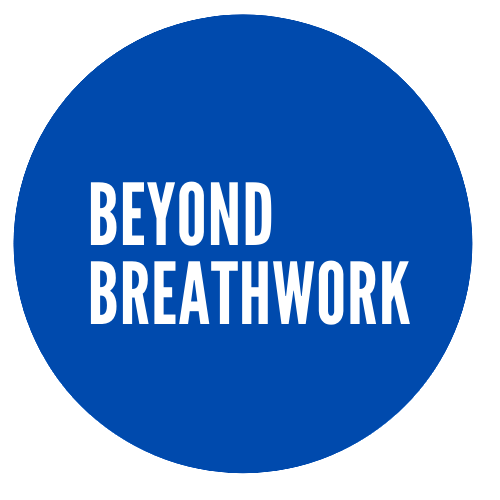Most people do not see much of a connection between breathing and mental health. It is often considered a biological function that only aids in replenishing the body’s oxygen supply and getting rid of waste gases. Breathwork is an art and science that helps people to understand the connection and teach them how to control their breathing to gain benefits mentally, emotionally, physically and even spiritually. It utilizes a variety of breathing techniques to change the breathing pattern to achieve certain benefits. This article outlines the connection between your mental health and your breathing patterns:
Does mental health affect breathing?
Yes, it does. If you are observant, you will notice that you breathe faster when you are scared, extremely angry, anxious, in an incredibly frustrating situation or even when you are depressed.
Anxiety is a common culprit when it comes to breathing problems. Stress often leads to panic attacks which cause one to hyperventilate. While not everyone reaches this point, almost everyone will experience anxiety at least once in their life.
Breathing problems associated with poor mental health differ in each person. Some people experience them intensely, while others barely notice it. For some people, such breathing problems only last a few seconds per minutes while it can go on for hours or even days for others.
What is deep breathing?
Deep breathing is precisely what it is – breathing deeply. Most people don’t realize that they breathe shallow and fast instead of deep and slow. Shallow breathing creates a sense of being rushed or looming urgency, which eventually contributes to anxiety and other mental problems.
Deep breathing, on the other hand, is more relaxing and therapeutic. It triggers the nervous system in the section that is responsible for rest. It slows down any impulses for flight or fight and allows you to process information while dealing with matters around you in a calmer and more controlled manner.
There are many types of deep breathing. Here are the three most common:
Coherent Breathing
In the resonant breathing rate index, five breaths per minute represent coherent breathing. Essentially, it means that you breathe in for five seconds and breathe out for another five seconds.
Resistance breathing
This involves a breathing exercise to resist the flow of air. Breathing out through the nose is one way of creating resistance. However, experts suggest that it is achieved through pursing your lips, tightening the muscles of the throat, putting the tip of your tongue against the inside of upper teeth, breathing through something like a straw or even hissing through clenched teeth. If this seems a bit much for you, breathe out through your nose.
Breath Moving
Breath moving has a history back with Russian monks who taught the technique to warriors so they could be more empowered during wars. It is more of an imaginative approach where every time you breathe in, you move the breath with your mind to a specific part of the body such as the heart and spine.
Types of Breathing
Generally, there are more ways of breathing than you can imagine. There are four major ones that we will discuss in this section:
Diaphragmatic Breathing
Naturally, we have a diaphragm just below the lungs, which moves to increase and reduce the chest capacity as necessary. When we breathe in, the diaphragm moves downwards to allow for the expanding chest volume and to minimize the abdominal cavity. It moves in the opposite direction when we breathe out.
Diaphragmatic breathing is what we refer to sometimes as deep breathing, or even stomach breathing.
Thoracic Breathing
This is a type of breathing where the diaphragm doesn’t lower to allow chest expansion during breathing in. The chest, therefore, expands by an extra volume. You can do this deliberately, but don’t do it for too long that you adapt it as your new normal.
Clavicular breathing
This is seen as one of the shallowest breathing patterns when the lung does not fill up enough to rise beyond the collar bone.
Paradoxical breathing
This is a breathing pattern where the chest compresses instead of expanding when one breathes it. It is strange and even dangerous as it restricts the lungs and prevents deep inhalation.
Benefits of deep breathing
Reduces stress and helps you relax
When you are stressed, the body produces the hormone cortisol, which triggers a variety of responses, including an increased breathing rate to increase circulation of blood with oxygen. The more the stress, the more cortisol produced, the faster you will breathe.
Deep breaths not only allow you to take in large amounts of air at each go but also slow down the heart rate to enable circulation of more oxygen. With any of the deep breathing techniques listed above, you will feel more relaxed and be in a better position to reason out and make decisions.
Relieving physical and mental pain
Deep breathing helps the body to combat the stress hormone by releasing the feel-good endorphin hormones. These not only improve your general mood but also reduces any pain you may be feeling.
Improves energy levels in the body
Improved circulation of oxygen-rich blood means that sugars are converted into energy faster. This gives you the energy you need to get through any challenging or difficult situations.
Reduced blood pressure
When you are stressed out, the stress hormones trigger responses such as fast and shallow breathing. This deprives the heart of sufficient oxygen and forces it to pump faster, which increases the pressure of blood. High blood pressure is hazardous for people with poor cardiac health, those suffering from certain illnesses or those under particular medication.
Deep breathing reverses this process by providing sufficient oxygen and slowing down the heart.
Conclusively, your mental health is connected to your breathing. Sadly, most people don’t realize this well enough to do something about it. You can start by taking deep and slow breaths – you will be astonished just how much it will change not only your mood but your life too.

